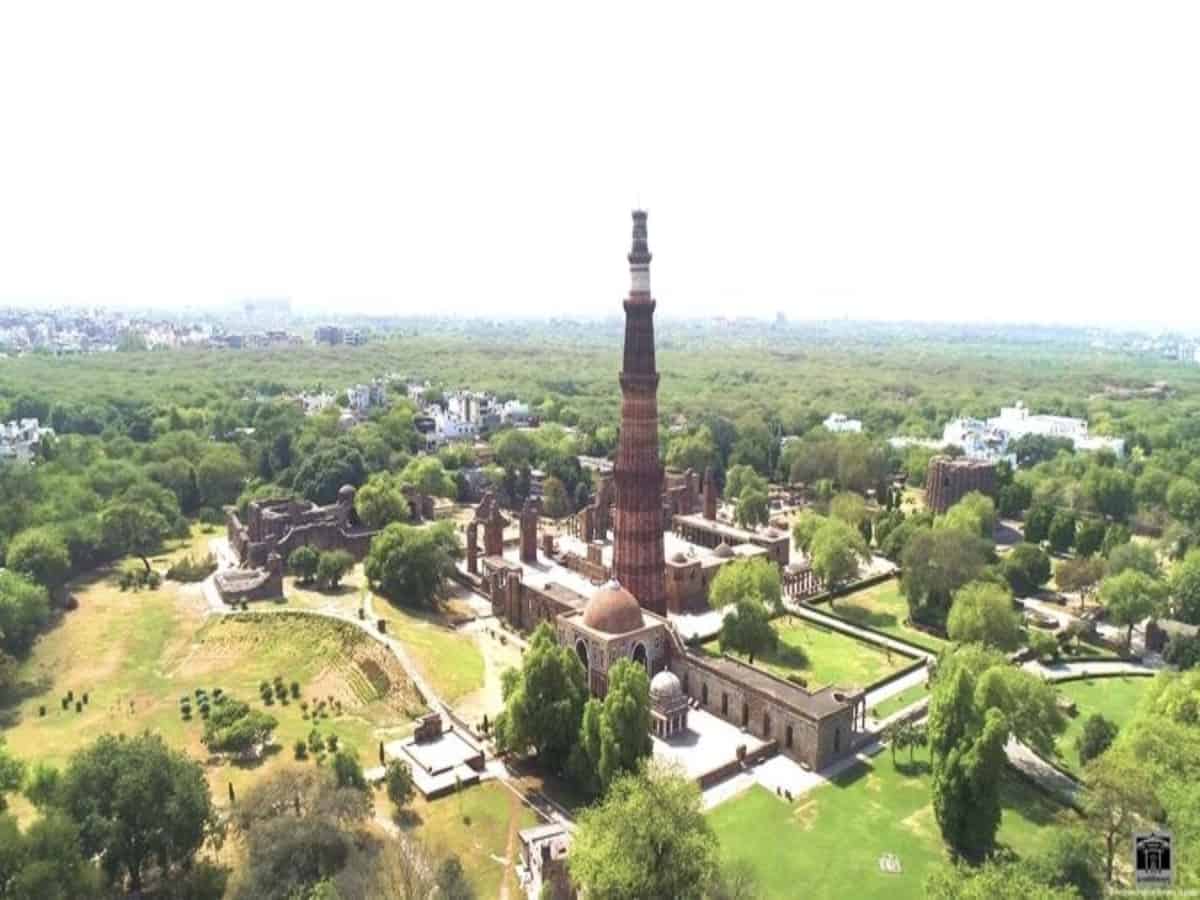
New Delhi: Former additional director general of the ASI B R Mani on Monday dubbed as “mere imagination” the VHP’s claim that the Qutub Minar was originally a ‘Vishnu Stambh’, and cautioned that any tampering with structures on the complex would result in the revocation of the Unesco world heritage status accorded to it in 1993.
Mani, however, said that it was a fact that 27 Hindu temples were demolished at the site and their remains were used in building Quwwat-ul-Islam mosque and the Qutub Minar as well but the demand for rebuilding these temples was “meaningless” as there was no trace of the location of these temples at the site.
Mani, who had been with the Archaeological Survey of India (ASI) for over three decades, is currently the vice chairman of Indian Archaeological Society which promotes and spreads knowledge about archaeology in its all aspects.
The Vishva Hindu Parisad (VHP) on Saturday demanded that the government rebuild all the 27 Hindu temples at the Qutub Minar complex and allow Hindu rituals to resume at the site.
The outfit’s national spokesperson Vinod Bansal also claimed that the 73-meter-high Qutub Minar was originally a ‘Vishnu Stambh’ on a temple of Lord Vishnu constructed during the times of a Hindu ruler.
Asked about the VHP claim, Mani told PTI, “I also believe that there were 27 temples. There are evidence to support it. Nobody has any doubt about it. But nobody knows where were those 27 temples located, what was their form, (structure) plan.”
He said it’s written on Qutbu’d-Din Aibak’s inscription that Quwwat ul Islam mosque was built using the debris of the 27 temples demolished at the site.
“Remains of the temples are spread all over the site, but no elevation, plinth, or any other thing was found there that could have helped trace the location of those temples. Something should have been be found like Adhisthana (base platform),” he said.
“They (Muslim rulers) destroyed everything when they invaded and built the Quwwat-ul-Islam mosque and erected the Minar on it, using the debris of the Hindu temples that they destroyed,” he said.
Hence there is “no meaning” of reconstructing them, he said.
“And, if we do any tempering with the structures at Qutub Complex, Unesco world heritage site tag given to it will be withdrawn, and the site will be placed in the endangered list,” he said, “Be it the VHP or any other party, no one would want this to happen.”
Mani had directed 20 archaeological excavations in India, including at the Ram Janmabhoomi-Babri mosque site in Ayodhya, during his 31-year-long service at the ASI.
Rejecting the VHP’s claim that the Qutub Minar was originally a ‘Vishnu Stambh’ built on a Vishnu Temple, Mani said that a 20-25-foot-deep excavation had been carried out at the spot to strengthen the monument’s foundation in 1967 but no trace of any temple was found.
“It’s mere imagination. There was nothing there, no temple was found there,” he said.
The ‘Vishnu Stambh’ is already there standing at the site in the form of an iron pillar, he said.
“The Minar cannot be a stambh like Ashokan pillars, which are monolithic, made of stone or iron. Minar is completely different structure,” he said.
Several such kinds of minaret of the same period are there in Central Asia for any body to see, he said.
“So its is not fair to have any doubt over the Minar. People have studied it very well. And if any attempt is made to give it a different spin, then it is not right,” Mani added.

